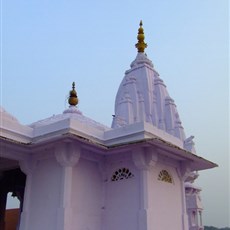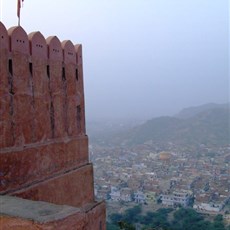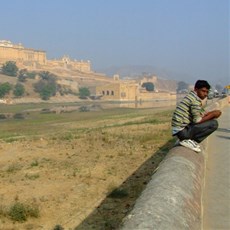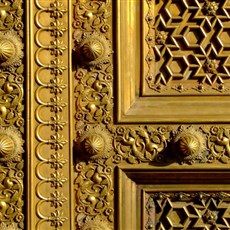2011 Biking Rajasthan
Rajasthan’s capital, Jaipur, known as the
Pink City, has a population of 2.6 million; while cycling you can literally be
approached by traffic from all four directions at the same time**. Here we
visited the Sun Temple
with its resident monkeys, the Palace of the Winds, built into the City Palace
walls so that the ladies of the court could watch street processions without being
seen, Amber Fort, founded 11km north of Jaipur in 1600, and the extraordinary
Jantar Mantar observatory.

Jaipur Sun Temple

Jaipur Sun Temple

Jaipur Sun Temple
Amber Fort’s founder fought 75 battles in
52 years, but still found the time to acquire 12 wives and 150 concubines. His
queen, on special occasions, wore clothing embroidered with gold and weighing
so much that she had to be wheeled around the palace in a wheelchair pushed by
four women.
The present Maharaja of Jaipur’s
grandfather was a devout Hindu who believed that non-Hindus were unclean and
that any contact with them had to be followed by ritual cleansing. He wore gloves
when dealing with the British, and after each meeting with the Viceroy burned
his clothes and bathed in holy Ganges
River water. When he was
invited to England to
celebrate Edward VII’s coronation in 1902, he carried 8,000 litres of Ganges water with him in two 345kg silver urns, each
beaten from 14,000 melted silver coins.
The Jantar Mantar observatory was begun in 1728.
I did not understand very much about the individual instruments, except for the
sundial which stands 27m high and on which the shadow moves 4m in an hour. The
best guide book to the observatory is sold outside the exit gate; as it is not
an official guide book, the vendors are not allowed to sell it outside the
entrance where it might be of some use!

Jaipur Palace of Winds

Jaipur Amber Fort

Jaipur Amber Fort

Jaipur Amber Fort

Jaipur Amber Fort

Jaipur Jantar Mantar

Jaipur Jantar Mantar

Jaipur Jantar Mantar

Jaipur Jantar Mantar

Jaipur Jantar Mantar
** Traffic: Those approaching from behind
are, of course, not entirely unexpected, though the variety of vehicles,
including the odd camel and elephant, is amazing. Those approaching directly
from in front can be seen and calculated into your imminent future plans. Those
filtering into the traffic from left or right, without warning and quite often
without looking, pose an interesting challenge. Based on previous experiences,
we quickly distilled four rules of the road: (1) hold your line, (2) don't do
anything surprising, (3) trust in the remarkable spatial skills of the average
Indian driver, (4) don't argue with anything bigger or faster than you ie if in
doubt, get off the road!